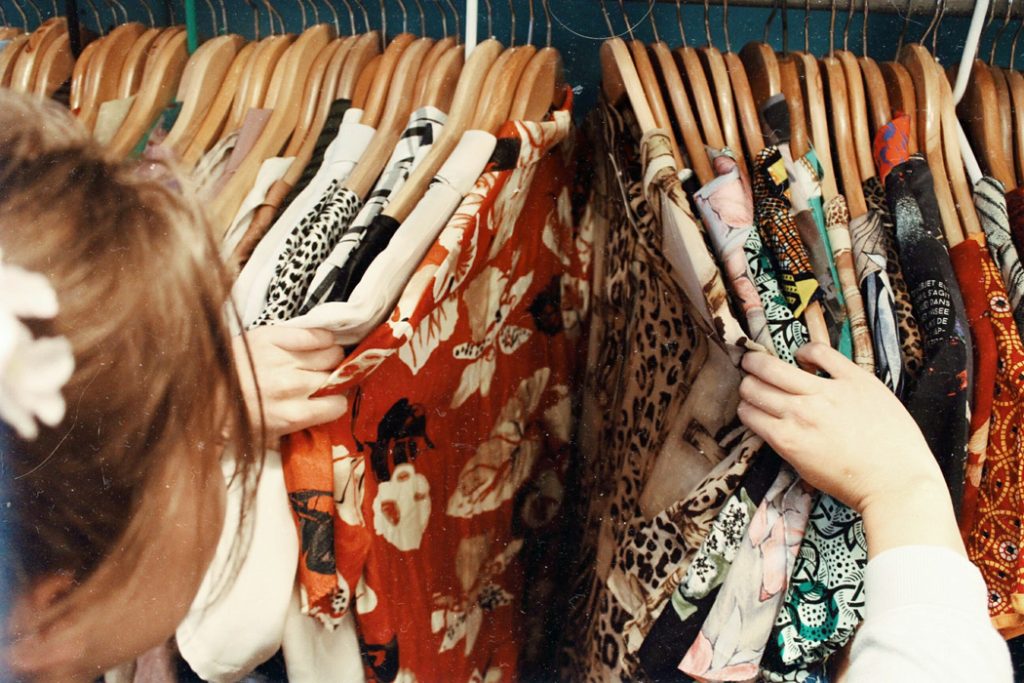
According to Andrew Morgan, filmmaker of the 2015 documentary The True Cost, the fashion industry employs one out of six people on Earth, from factory workers in Bangladesh to H&M employees. This colossally labor-intensive and globalized industry is sustained by equally abundant demand from Western nations. Today, the average American purchases approximately 68 new items of clothing every year, according to the apparel company Rent the Runway in an interview with The New Yorker. Compare this with a 2015 study by the British charity Barnado’s that suggests on average each piece will be worn only seven times before being discarded. It is therefore no surprise that fashion is now believed to be the second most polluting industry on earth.
Why So Much?
There are three main reasons why clothing consumption has exploded in recent decades:
- Clothing is cheaper because of lower material and labor costs. It is estimated that less than 2 percent of garment workers earn a living wage (The True Cost).
- The average quality of clothes is in decline. This means we need to replace clothes more frequently from wear and tear.
- Heavily marketed fashion trends convince us that we need more.
Many of these forces are interconnected. For example, inexpensive materials like petroleum-based polyester used in modern clothing bring costs down, but they also decrease the quality and lifespan of clothes. Lower costs also mean that retailers can afford to keep much higher inventories. They sell as much of these inventories as possible with marketing campaigns that strategically influence which fashions are in season. You’ve likely heard this referred to as “fast fashion.”
Fast Fashion’s Environmental Impact
The overproduction and unsustainable consumption of clothing is problematic when one considers that every item of clothing in existence will at some point end up in a landfill or simply be burned. The environmental toll extends further, as many modern polyester clothes shed tiny microplastics after every wash and every moderate wearing. Thirty-five percent of all the microplastic in the ocean comes from textiles, according to a 2017 publication from IUCN.org. Fashion also is responsible for up to 10 percent of global carbon dioxide output, according to the United Nations Environment Programme. This figure surpasses the carbon output of international flights and shipping combined.
Sustainable Clothing Choices
When choosing what to do with old clothes, one might bring them to a used clothing store or donate them to Goodwill or the Salvation Army. The issue here is that these organizations are already overwhelmed by the influx of clothing they receive. Only 10 to 20 percent of these items can be upcycled, according to a 2022 article from Northeastern University’s magazine Experience. And this takes into account the fact that only 15 percent of used clothes are donated to begin with. Furthermore, recycling is not an ideal or easily accessible option for old clothing. According to the Ellen MacArthur Foundation, less than 1 percent of recycled clothes are turned back into new textiles and garments. The vast majority are downcycled for uses such as insulation.
Instead of putting all of our bets on the disposal of old clothes, we should instead attempt to reduce the number of clothes we dispose of in the first place. When buying new clothes, look for high-quality, durable fabrics to avoid unanticipated damage that could bring an untimely end to a garment’s life. Maintenance of the clothes you already own is also crucial—read the tags on items to know how to properly maintain them. It may also be wise to purchase an inexpensive sewing kit and learn how to perform simple repairs yourself.
There is no need to compromise on your style, either. You can go to Goodwill or host clothing swap events to find quality, sometimes brand-new items. This gives clothes new life without adding to the surplus of clothing already in circulation.
Changing our individual relationship to clothing may not be a complete fix for the waste generated by the fashion industry, but by changing our spending decisions, we can be certain that we are doing our part in keeping clothes out of landfills.
